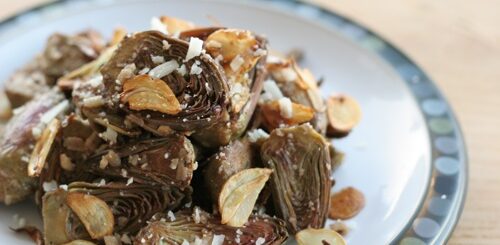{top tip} Guess What? I Use Pam
In my home kitchen, I use a lot of shortcuts and tricks gleaned from my checkered pants past. From time to time I will pull one out of my toque and share it with you! If you have questions or requests, leave them in the comments and I’ll tackle them in a future post.
There, I said it. I use Pam, and I LOVE it.

I know what you’re thinking. You’re thinking that I’m impure because I use Pam and that all my baked goods must taste funny and that if I were a REAL chef I would never use such a horrific product. But the ugly truth is that cooking spray is one of the most useful things in a restaurant kitchen. At the range of places I have cooked, from the medium-low end to the very very very high end, there have been industrial-sized aerosol cans of cooking spray all over the place, and they get used all the time.
Sure, at home, you can butter and flour a cake pan to your heart’s content. But buttering and flouring hundreds of cake pans? Hell no. Not gonna happen. A sheen of spray is all it takes. It works beautifully, and it’s fast, and it doesn’t affect the flavor. I promise. So spray away.
It’s also not that scary, even though it might remind you of Aqua Net. Cooking spray is generally just oil and soy lecithin. Soy lecithin is a byproduct of soybean that some people take, on purpose, as a dietary supplement. It’s been shown to be harmless at worst, and beneficial at best.
Maybe you need to ease into it. Buy an organic version. Make your own if you must. But for goodness’ sake, put down the butter and flour and get to spraying.
(This post is not sponsored by Pam or any other cooking spray, although they would probably enjoy reading it.)






I use pam too, but am also a fan of vegetable oil put into a container that can aerosolize it.